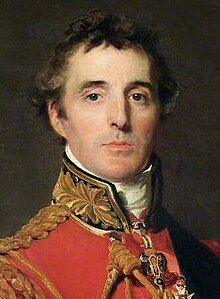Today I entered the world of Shakesperean actors, literary London and Dracula. The item that took me there was a commemorative medal bearing a portrait of Sir Henry Irving – out first theatrical knight. The medal is dated 1891 – he still had four years to go before his knighthood.
He was famous for The Bells, in addition to his Shakesperean roles, and for reputedly being the model for Count Dracula. When you look at some of his pictures you can see why.
These days he is probably as famous for having Bram Stoker as his assistant, as he is for being a great actor. Stoker worked for him for 27 years and in that time they were both to dine at the White House and rub shoulders with the rich and famous.
The medal, as you can see, has had a hard life and someone has put a hole through it. They used to do that and wear them from ribbons round their necks.
Next, we have a medal to Sir Thomas Lawrence, a fashionable, somewhat raffish painter who died at the age of 60 in 1830. He had been President of the Royal Academy for 10 years at the time of his death. I have plundered Wikipedia for two of his more famous paintings.


The medallist is the wonderfully named Scipio Clint. I don’t know why he had such a distinctive name, as his father was George and his brother Alfred. He used designs by two well-known sculptors, one being E H Baily, designer of the Nelson statue that stands on the column in Trafalgar Square.
Finally we have Sir Isaac Newton, in the form of a medal by John Croker commemorating the death of Newton in 1727.
Newton is an interesting man – a framer of great scientific principles, alchemist, heretic, reputed inventor of the cat flap and Master of the Mint. In the last job he was responsible for the Great Recoinage of 1696.
During the recoinage he was greatly helped by John Croker, which suggests that the depiction of Newton on the medal is probably accurate, even if it is not flattering.
All three of the medallions have seen better days, but they are all great pieces of history. There is something very calming about working with things of this age, which is more than you can say about decimal coins.











Pingback: The Coming Week | quercuscommunity
Pingback: A Different World (Part 2) | quercuscommunity
Better castings than many of the modern royals. I hadn’t known about Bram Stoker/Henry Irving
Both interesting men.
An interesting post, I enjoyed reading it.
Thank you. It was good being able to write about something different.
At the risk of sounding crass, what are these medals worth – I can see why you find them more interesting that decimal coinage.
It’s not crass – it’s what pays the wages. 🙂 The Lawrence Medal is £42.50, the Irving is £55, the Newton £225 and the Duke of York (which I will talk about tonight) is £285. It’s a question of rarity, condition, subject, age and popularity, plus what it cost us and a bit of guesswork.
Thank you.
No problem.
An interesting assortment of coins and people, Quercus.
It would be interesting to know the origin of Scipio’s name.
He had a son – Scipio Milton Clint – he was probably an artist who went to Australia in 1852 and was still there a couple of years later working as a ventriloquist. Also another son and two daughters.
I like Scipio Clint, a wonderful name if ever I heard one. The medals are interesting too.
It seems strange that one name should be so interesting when compared to his father and brother.
Great pieces of history is right! I really like the name Scipio.
Yes, a fine name.